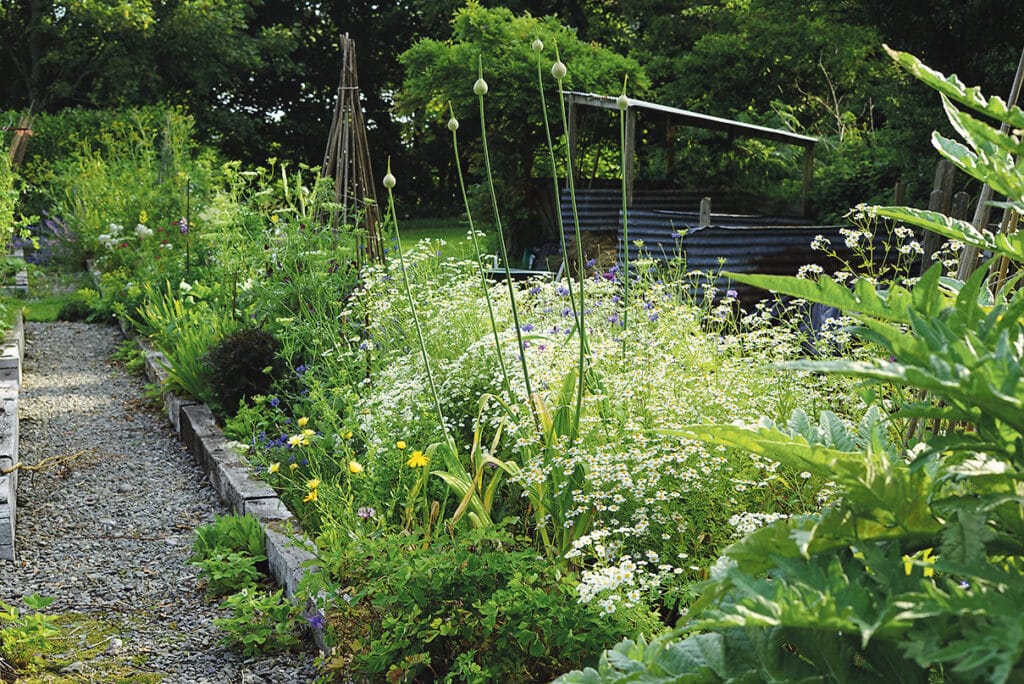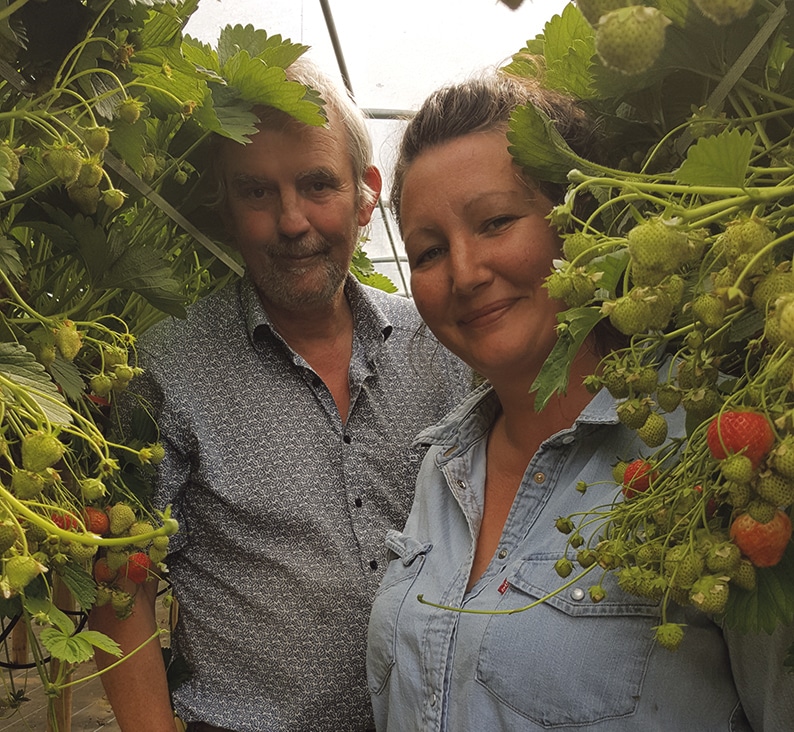
In the last couple of days we have seen a considerable amount of rainfall. It was quite a relief. Watering is very time-consuming and, although we have our own well, it is something we try to avoid once small plants have settled in. Our sandy soil drains very quickly, but in a dry spring it is harder to get plants to establish a good root system, so recently we’ve spent a lot of time watering. One good thing about watering by hand is that you have time to notice problems or jobs that need doing before it is too late. Timing is everything when you are trying to squeeze lots of produce from a small area. Our main task over the next week or so will be mulching between plants before the soil dries out again. We use lawn mowings in small layers. This has the added benefit of keeping the weeds down and eventually the mulch breaks down in the soil which in turn improves the humus content.
Despite the dry weather most things are thriving, and some crops have come and gone already. We are interplanting so that the beds are rarely empty, with trays of seedlings and young plants waiting to take their turn. We are trying to be more efficient with space but again, that comes down to keeping the soil as healthy as possible. Meanwhile, the compost making goes on. Our aim is to put a good thick layer of compost over the garden in the autumn, which will make our work so much easier next year.
The edible lupins are just coming into flower. I haven’t got enough plants to really try them out in the kitchen, so I think we will concentrate on saving the seed and building a bigger stock of plants for next year. We’ll definitely have one meal though, to try them out. There is no point in growing things you don’t want to eat. The flowers are beautiful and really add to the beauty of the garden. The green lentils are also very interesting, So far they are a low growing, sprawling sort of plant, and I think you would need to grow quite a big patch to get much sustenance through the winter months.
One experiment I am very pleased with is the companion planting of kale and white cosmos. The idea is that the white flowers will fool the cabbage white butterflies into thinking the patch is already occupied, so they bypass it. It has no scientific reasoning whatsoever, but it does make the kale bed really pretty and so far the plants are clean. This is more likely to be due to the fact that the first hatching of cabbage white butterflies happened earlier in the spring and there hasn’t been many about recently. But time will tell and kale plants are very resilient and will recover, as long as they don’t get too much damage. All our other brassicas are safely covered over with insect netting, which is working really well. It is relatively expensive but with care the nets can last for many years. Not only does the netting keep the butterflies and cabbage root fly out but also gives some weather protection. The broccoli we have covered looks amazing, and we will be harvesting it in the next couple of weeks with the happy knowledge that we won’t be eating caterpillars with our greens.


